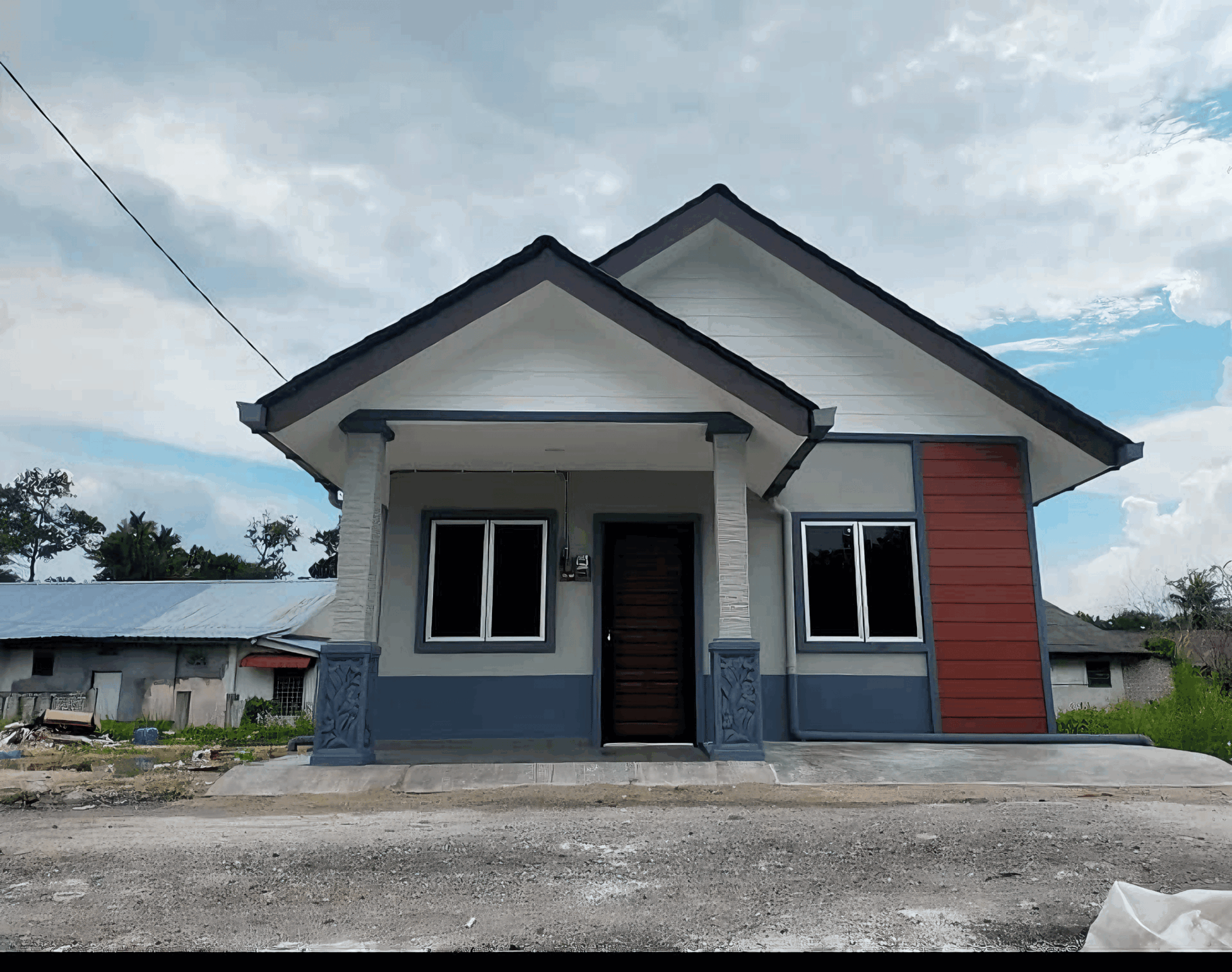In the bustling streets of Kuala Lumpur to the serene landscapes of Sabah, Malaysia is witnessing a construction boom like never before. Skyscrapers are rising, roads are expanding, and new infrastructures are taking shape, promising a bright future for this vibrant nation. But behind this ambitious growth lies a pressing issue that could throw a wrench into the works—the construction skills gap. It’s not just a blip on the radar; it’s a ticking time bomb that could jeopardize projects, inflate costs, and delay timelines. As we dive into the heart of this matter, let’s unpack what this skills gap really means for our construction industry and the potential impact it could have on Malaysia’s aspirations for progress. Buckle up, because understanding this issue might just make all the difference for our future!
Understanding the Construction Skills Gap and Its Implications for Malaysia
The construction sector in Malaysia is grappling with a significant skills gap, which poses a serious threat to the industry’s growth and stability. With rapid urbanization and infrastructure demands on the rise, the shortage of skilled labor has never been more apparent. This gap is primarily fueled by a lack of training programs and insufficient emphasis on vocational education. As a result, many projects face delays, costs balloon, and the quality of workmanship can suffer. It’s becoming clear that without immediate action, this skills crisis will jeopardize the entire industry’s future.
Moreover, the implications of this gap extend beyond just construction firms. Industries that rely heavily on infrastructure—a key economic driver—will encounter setbacks, potentially influencing job creation and economic development. It’s not just about builders and contractors; it’s about the kind of future we are building for the next generation. To illustrate the broader impact, consider these critical effects:
- Increased project costs: Delays prompt budget overruns.
- Quality of output: Inexperienced workers contribute to subpar construction.
- Investor confidence: Reduced reliability can scare off potential investments.
Addressing the skills gap requires a collaborative effort between the government, educational institutions, and industry stakeholders. It’s essential that we create an ecosystem where training and apprenticeships flourish, helping the workforce develop the necessary skills to meet modern demands. Innovative solutions such as public-private partnerships and enhanced curriculum in technical colleges can pave the way for a skilled labor force ready to tackle Malaysia’s ambitious construction projects. Without this collective action, the skills gap will remain a ticking time bomb, threatening not only the integrity of the construction industry but also the nation’s economic aspirations.

The Economic Consequences of Under-skilled Workers in the Construction Industry
The construction industry in Malaysia is facing a serious challenge due to a shortage of skilled labor. When projects are manned by under-skilled workers, the quality of construction tends to suffer, leading to significant economic repercussions. Delays become a common sight on construction sites, as these workers take longer to complete tasks, impacting project timelines and causing overruns. This, in turn, affects client satisfaction and damages the reputation of construction firms, leading to potential losses in future contracts.
Moreover, the cost implications of having a workforce lacking essential skills can be substantial. Under-skilled workers are more prone to errors, resulting in the need for rework, which not only inflates project costs but also stretches resources thin. For example, a recent analysis found that projects involving poorly trained laborers could experience cost overruns of more than 15%, as seen in the following table:
| Project Type | Cost Overrun (%) |
|---|---|
| Residential Building | 12% |
| Commercial Complex | 18% |
| Infrastructure Development | 15% |
the social ramifications cannot be ignored. A workforce comprised of under-skilled workers can lead to safety hazards on construction sites. Increased accidents not only jeopardize the well-being of workers but also place financial strains on companies due to higher insurance premiums and legal liabilities. Furthermore, a decline in job quality may discourage investment in the construction sector, as clients may seek alternatives with proven quality over time, ultimately hampering economic growth in the region. The interrelated effects of these challenges create a ticking time bomb that could severely impact Malaysia’s construction industry if left unaddressed.

Identifying the Root Causes of the Skills Shortage in the Malaysian Workforce
One of the primary factors fueling the growing skills shortage in Malaysia’s construction sector is the mismatch between educational outcomes and industry requirements. Despite a steady output of graduates from various institutions, their skill sets often lack alignment with what employers truly need. This disconnect results from a focus on theoretical knowledge over practical application, leaving many young professionals unable to meet the immediate demands of the workplace. Additionally, the rapid evolution of construction technologies often outpaces curriculum updates, further widening the gap.
Another aspect contributing to the skills deficit is the industry’s perception and stigma associated with vocational and technical education. Many students and parents view these paths as less desirable compared to more traditional academic routes. Consequently, the construction trades struggle to attract the necessary talent, leading to an aging workforce that lacks fresh, skilled entrants. Some key elements of this issue include:
- Societal Attitudes: A prevailing belief that white-collar jobs are superior.
- Job Stability Fears: Worries about career longevity in a fluctuating market.
- Limited Awareness: Lack of information on lucrative opportunities within the construction field.
economic factors play a significant role in exacerbating the skills gap. The construction industry, often subject to market volatility, can face project delays or cancellations, making it difficult for workers to find stable employment. Furthermore, competitive wages in other sectors draw potential talent away from construction jobs, creating a scarcity of skilled labor. A simple comparison of wage trends can illustrate this issue:
| Sector | Average Monthly Salary (MYR) |
|---|---|
| Construction | 3,000 |
| IT | 5,000 |
| Finance | 6,000 |
This stark contrast in earnings highlights the urgent need for the construction sector to innovate and promote its potential, not just as a viable career path but as one with long-term prospects for sustainable growth and development.

Impact of Technological Advances on Skill Requirements in Construction
As the construction industry in Malaysia evolves, the skill sets required by workers are transforming at an unprecedented pace. With the integration of technological advances, such as Building Information Modeling (BIM), drones, and automated machinery, it’s no longer enough for workers to possess traditional craftsmanship. Instead, a fusion of technical know-how and digital proficiency is becoming essential. This shift demands that current and prospective construction workers adapt to not only the tools of the trade but also the software that drives these innovations.
The rise of smart construction practices is reshaping job roles across various sectors within construction. Workers now need to develop a deeper understanding of data analytics, project management software, and even cybersecurity to protect sensitive project information. From entry-level positions to project managers, there are new expectations about using technology effectively. Moreover, this transition creates an urgent need for training programs tailored to these advancing technologies, addressing the gap between current skills and market demands.
To illustrate the shift in skill requirements, here’s a quick comparison of traditional skills versus modern needs in construction:
| Traditional Skills | Modern Skills |
|---|---|
| Basic carpentry techniques | BIM software proficiency |
| Masonry | Data interpretation and analysis |
| Blueprint reading | Drone operation and data collection |
| Manual labor | Automated machinery handling |
This evolving skill landscape presents both challenges and opportunities. Construction companies must recognize the urgency of investing in training programs and continuous education to equip their workforce with modern skills. Workers who upskill can not only improve their employability but also contribute to a more efficient, competitive construction industry in Malaysia, paving the way for innovation and growth.

Bridging the Gap: The Role of Education and Training Programs
The construction industry in Malaysia is at a crucial juncture, and the urgency to address the rising skills gap cannot be overstated. Education and training programs are essential for equipping our workforce with the necessary skills. By investing in tailored training initiatives, we can ensure that workers are ready to meet the industry’s evolving demands. Collaboration between educational institutions and the construction sector is vital to align curricula with real-world requirements. This will help us produce a workforce that is not only technically sound but also adaptable to new technologies and methods.
A significant aspect of bridging the skills gap lies in practical training. Instead of solely relying on theoretical knowledge, programs that incorporate hands-on experiences can transform learning into an engaging and impactful process. Opportunities such as apprenticeships and internships can provide students with invaluable exposure to the nuances of construction work. These experiences help them develop soft skills, critical thinking, and problem-solving abilities, making them more employable upon graduation.
Moreover, public awareness campaigns highlighting the importance of skilled trades can attract more individuals to the construction field. Creating a more positive perception of vocational careers is crucial in breaking the stigma associated with them. Community engagement through workshops or job fairs can further stimulate interest among the youth. These initiatives could lead to an increase in enrollment in training programs and ultimately help in meeting industry demand. The future of Malaysia’s construction industry depends on a well-trained workforce that is prepared to tackle the challenges head-on.

Fostering Collaboration Between Industry and Academic Institutions
Bridging the gap between industry needs and academic programs is crucial for equipping the future workforce with relevant skills. By establishing strategic partnerships between construction companies and educational institutions, we can cultivate a curriculum that aligns closely with real-world demands. This partnership can take many forms, including:
- Internship Opportunities: Providing students with hands-on experience in construction projects.
- Guest Lectures: Industry professionals sharing insights about the latest trends and challenges in the field.
- Joint Research Projects: Collaborating on innovative construction techniques and sustainable practices.
Moreover, fostering a culture of innovation and adaptability within academic settings is key. Engaging students in problem-solving activities that mirror industry scenarios helps strengthen their critical thinking and practical skills. Institutions can introduce labs or workshops where students can experiment with new technologies, such as Building Information Modeling (BIM) or advanced materials, thereby ensuring they are job-ready by graduation.
Additionally, creating a feedback loop between educators and employers can enhance the quality of training programs. Regular consultation sessions can:
| Industry Feedback Type | Purpose |
|---|---|
| Skills Assessment | Aligning curricula with market demands |
| Workforce Projections | Preparing students for future employment trends |
| Technological Advancements | Integrating new tools and techniques in teaching |
This collaboration not only empowers students but also ensures that companies have access to a skilled and competent workforce ready to confront the challenges of the construction sector head-on.

Government Policies and Incentives for Tackling the Skills Crisis
The Malaysian government has recognized the urgent need to address the skills crisis in the construction sector, and they’re rolling out a variety of policies and incentives designed to enhance training and education. By collaborating with educational institutions and industry leaders, the government is aiming to align curricula with current market demands. This means more focused programs that directly equip students with the skills needed in construction, ensuring a smooth transition from the classroom to the job site.
To further motivate industry engagement, incentives such as tax breaks, subsidies for training programs, and grants for skill development initiatives have been put in place. These measures are not just about spending; they encourage companies to invest in their workforce and create robust apprenticeship frameworks. A culture of lifelong learning is promoted, where continuous skill upgrading becomes a norm, ultimately leading to a more adept workforce prepared to tackle complex construction challenges.
| Policy/Incentive | Description |
|---|---|
| Tax Relief | Encourages companies to invest in training and development by reducing their taxable income. |
| Grants for Training | Financial support for organizations that offer training programs to new workers. |
| Partnership Programs | Collaborations between government and educational institutions for skills training. |
Moreover, initiatives such as the Skim Latihan 1Malaysia have been significant in propelling skill accreditation and enhancing employment opportunities for graduates. With a holistic approach that combines government support, private sector engagement, and educational improvement, Malaysia is taking vital steps toward closing the skills gap in construction. The success of these policies hinges on stakeholders working together, ensuring no talent is left untapped, and reinforcing the construction industry’s role in national development.

Innovative Solutions to Attract and Retain Talent in the Construction Sector
To tackle the pressing issue of talent acquisition and retention, the construction sector in Malaysia can adopt several innovative strategies that appeal to the modern workforce. One approach is to enhance the work-life balance by offering flexible working hours and remote working options where feasible. This can make the construction industry more attractive, particularly to younger generations who value flexibility as much as job stability. Implementing job-sharing schemes can also provide opportunities for part-time work, catering to those who may have family commitments or other responsibilities.
Another vital strategy is to invest in training and development programs that go beyond traditional methods. Utilizing technology, such as virtual reality (VR) and augmented reality (AR), can create immersive training environments that enable workers to learn and practice skills in a safe and controlled space. Additionally, partnering with educational institutions to provide apprenticeships or internships can give young talent a running start in their careers while simultaneously addressing the skills gap. This not only enriches the talent pool but also fosters a culture of continuous learning within the organization.
Moreover, fostering an inclusive workplace culture can significantly enhance employee satisfaction and retention. Employers should focus on building diverse teams and promoting equal opportunities for advancement, ensuring that every voice is heard and valued. In conjunction with this, offering competitive compensation packages, including benefits such as health insurance, retirement plans, and even mental health support, shows that the company genuinely cares about its workforce. The combination of these strategies can create a more committed and engaged workforce, helping to bridge the talent gap in Malaysia’s construction sector.
In Summary
As we wrap up our discussion on the construction skills gap that’s lurking like a time bomb in Malaysia, it’s clear that this issue isn’t going away anytime soon. The construction industry is a backbone of our economy, and with a growing demand for skilled workers, we can’t afford to ignore the signs any longer.
To avoid a potential crisis, it’s time for all of us—government, educational institutions, and businesses—to come together and find effective solutions. Let’s invest in training programs, promote vocational education, and create opportunities for young people to step into this crucial field.
The future of our construction industry depends on the actions we take today. So, let’s gear up and build a brighter tomorrow—one skilled worker at a time. The countdown has started, and it’s up to us to defuse that ticking bomb.
Source link
kontraktor rumah
bina rumah
pinjaman lppsa
pengeluaran kwsp
spesifikasi rumah
rumah batu-bata
pelan rumah
rekabentuk rumah
bina rumah atas tanah sendiri
kontraktor rumah selangor
rumah banglo




